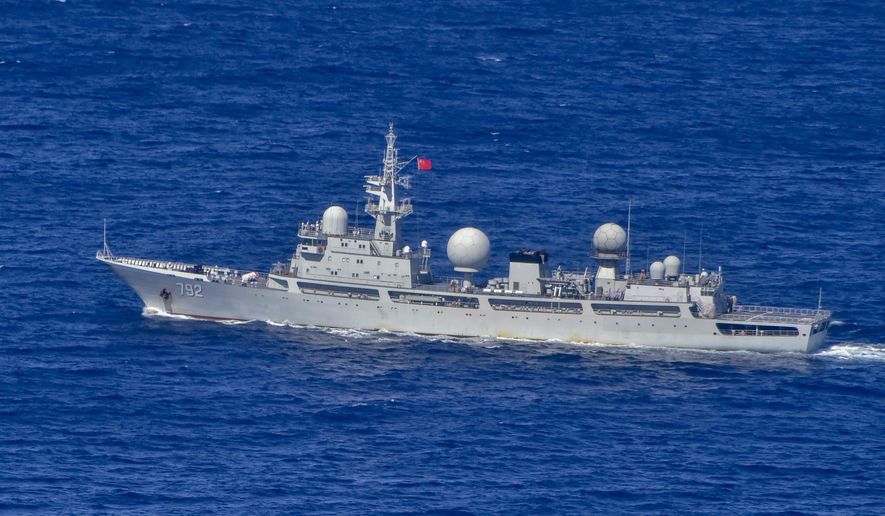The Biden administration’s defense budget isn’t keeping pace with a rapidly accelerating Chinese military buildup or even the current rate of inflation in the United States, top Republicans on Capitol Hill said Tuesday.
Senate GOP lawmakers panned the Defense Department funding request on Tuesday during Senate appropriations hearing about the $255.8 billion sought for the Navy and Marine Corps for the 2024 fiscal year, arguing it won’t keep up with Beijing’s extensive shipbuilding program and will even result in a smaller U.S. Navy fleet by 2028.
Sen. Susan Collins, a Republican from Maine, said the budget request doesn’t reflect the “accelerating threat” from China, which Biden administration officials regularly note is the nation’s leading “pacing challenge.” Under the Biden administration plan, the Navy will have 291 ships in the fleet at the end of the next five years, she said.
“That is smaller than today’s fleet of 296 ships and significantly smaller than the Navy’s own requirement of 373 ships,” said Ms. Collins, the ranking GOP member on the Senate Appropriations defense subcommittee.
China, which is challenging the U.S. Navy for supremacy in the South China Sea and other East Asian sealanes, is expected to have a fleet of more than 440 ships by 2030, she said.
“This administration’s budget request does not fully reflect the challenges identified in its own national defense strategy,” Ms. Collins said.
The Navy annually consumes about 24 million barrels of fuel to power its ships and aircraft, along with its other needs. The Pentagon assumed the fuel price would be $140 per barrel when it wrote the budget. But, the price shot up to $169 per barrel on the very day the budget was rolled out, Ms. Collins said.
“That’s 20% more than was budgeted. Each $1 per barrel increase carries a $24 million cost,” she said.
Senate Democrats backed the funding request, saying it “represents continuity from last year’s budget.”
“It reinforces what we already know: Despite Russia’s ongoing, unjust war in Ukraine, China remains our No. 1 pacing threat,” said subcommittee Chairman Jon Tester, Montana Democrat.
The Navy wants to cut three amphibious ships and at least two cruisers from their current fleet. Navy Secretary Carlos Del Toro told senators the ships on the list offer only “limited warfighting capability.”
“Our decisions to divest or extend a ship’s life are based on a hull-by-hull evaluation,” Mr. Del Toro said. “We seek to strike a balance between readiness, modernization and capacity, [but] with an immediate emphasis on readiness.”
When Senator Lindsey Graham, South Carolina Republican, grilled him over the Navy’s shrinking fleet size in relation to China, Mr. Del Toro noted that U.S. warships are more modern and lethal than Beijing’s.
“Let’s hope so. If not, we’re in a world of hurt,” said Mr. Graham.
Admiral Michael Gilday, the chief of naval operations, said that merely comparing the number of warships in each country’s fleet isn’t an adequate measure of naval strength. The Navy can’t afford to continue maintaining ships designed for a “bygone era” at the expense of readiness and modernization, he said.
“Keeping old ships that are not usable or workable is not going to make us a stronger Navy,” Adm. Gilday said.
The Navy ultimately wants a combined fleet of 373 manned ships and about 150 unmanned warships and says it is working toward that goal. The service has 56 ships under construction and another 76 under contract, Adm. Gilday told the senators, as the Pentagon’s focus shifts from Europe, the Middle East and global terror groups to China’s rising challenge in East Asia.
“For 20 years, we were focused on ground wars and, understandably so, the Navy wasn’t the priority,” he said. “We can’t buy back time.”
• Mike Glenn can be reached at mglenn@washingtontimes.com.




Please read our comment policy before commenting.